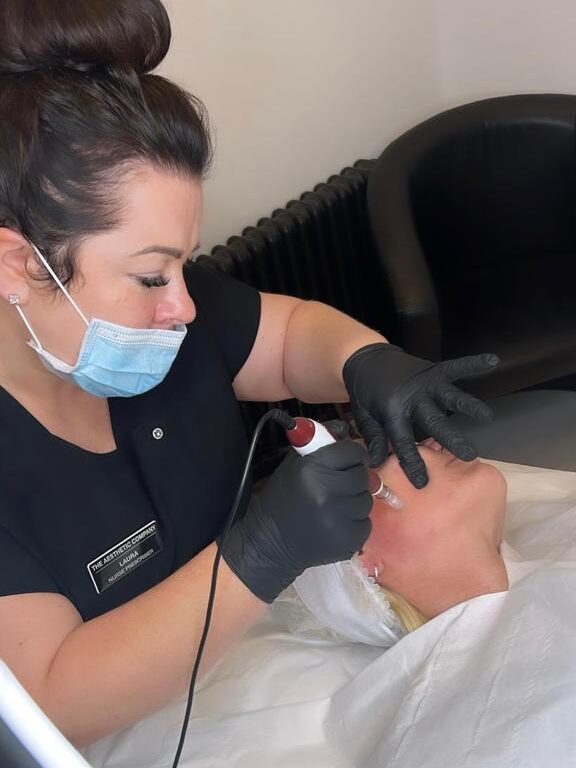Microneedling
Revitalise your skin with microneedling at our Wirral & Liverpool clinics. This advanced treatment stimulates collagen production, improving skin texture, reducing fine lines, acne scars, and pigmentation. Microneedling enhances skin renewal for a firmer, smoother, and more youthful complexion.
Overview
Medical microneedling, also known as collagen induction therapy, is a minimally invasive cosmetic procedure that involves using a device with fine, sterile needles to create controlled micro-injuries to the skin. The process stimulates the skin’s natural healing response, resulting in the production of collagen and elastin, which are essential for healthy and youthful-looking skin.
Here are some key points about medical microneedling:

Procedure
During the treatment, a handheld device called a microneedling pen is gently pressed over the skin. The device is equipped with tiny needles that create small punctures or channels in the uppermost layer of the skin, known as the epidermis.
Collagen Induction
The micro-injuries from the needles trigger the skin’s healing process. The body responds by producing new collagen and elastin fibers, which help repair and rejuvenate the skin. The increased collagen can improve skin texture, reduce the appearance of scars, fine lines, and wrinkles, and enhance overall skin firmness.
Treatment Areas
Medical microneedling can be performed on various areas of the body, including the face, neck, décolletage, hands, and other areas with skin concerns. It is often used to address acne scars, hyperpigmentation, enlarged pores, stretch marks, and general skin texture irregularities.
Customisation
The depth of needle penetration can be adjusted based on individual needs and specific skin concerns. Deeper penetration is typically used for treating scars and wrinkles, while more superficial treatments can be effective for general skin rejuvenation and enhancing product absorption.
Professional Procedure
Medical microneedling is commonly performed by trained healthcare professionals, such as dermatologists or aesthetic practitioners. They have the expertise to determine the appropriate needle length, device selection, and treatment settings to ensure safety and effectiveness.
Downtime and Recovery
Following the procedure, the skin may appear red or slightly swollen, similar to a mild sunburn. Some individuals may experience temporary skin sensitivity or tightness. These effects typically subside within a few days, and the skin’s appearance gradually improves over time as collagen remodeling takes place.

Following Procedure
Following the procedure, the skin may appear red or slightly swollen, similar to a mild sunburn. Some individuals may experience temporary skin sensitivity or tightness. These effects typically subside within a few days, and the skin’s appearance gradually improves over time as collagen remodeling takes place.
Treatment Course
Achieving optimal results usually requires a series of microneedling sessions. The exact number of treatments depends on individual skin condition and treatment goals. Sessions are typically spaced a few weeks apart to allow the skin to heal and regenerate between treatments.
It’s crucial to consult with a qualified healthcare professional to determine if medical microneedling is suitable for your specific skin concerns and to receive personalised treatment recommendations.

